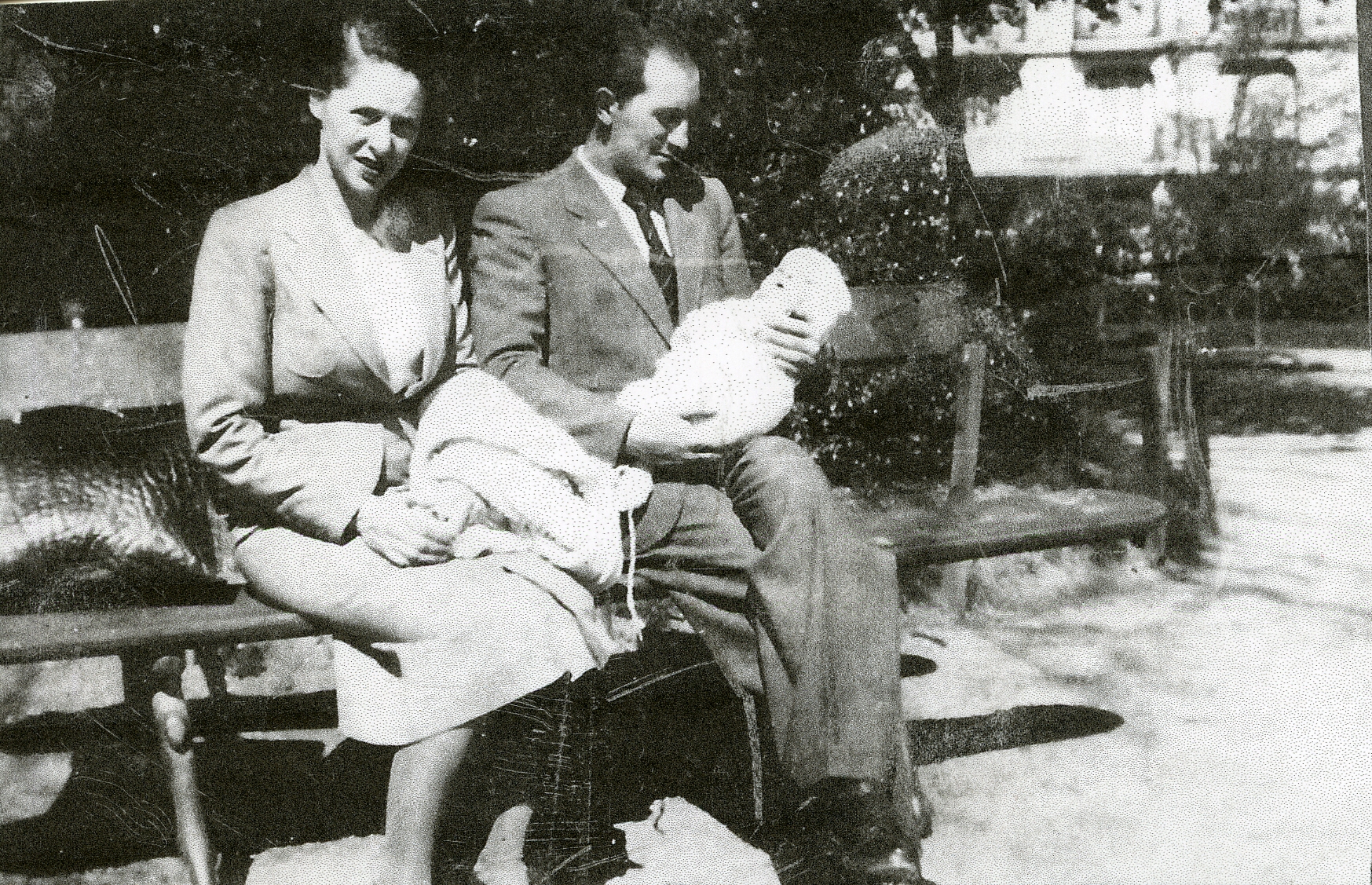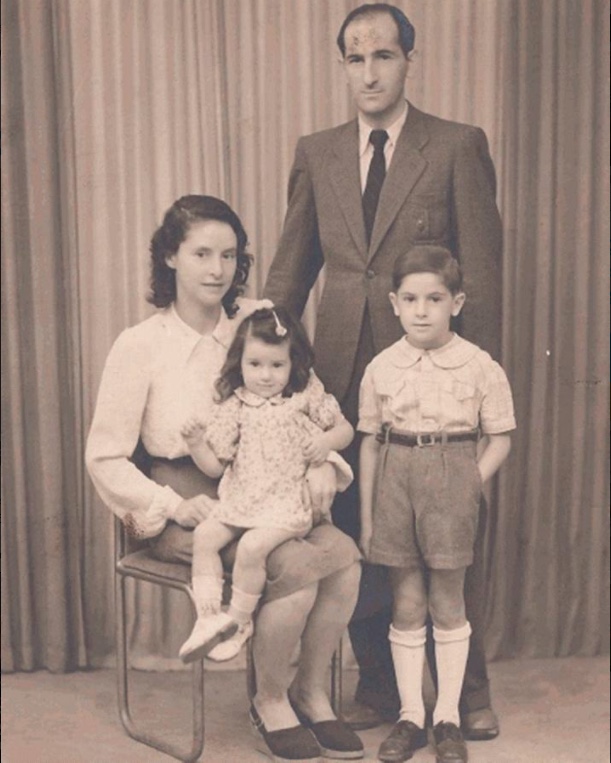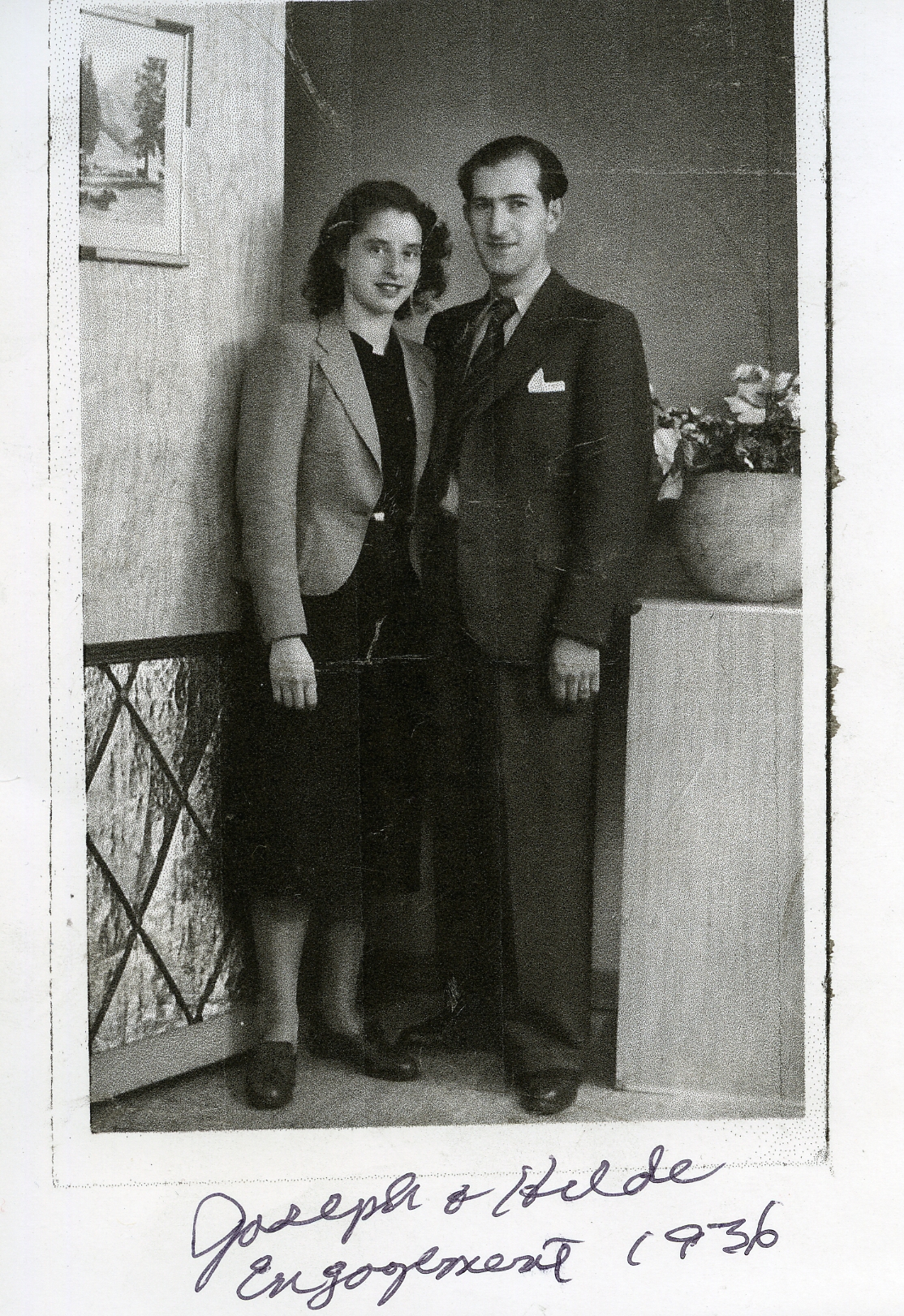| Soutenez le travail de l'AJPN |
| Recherche de personne, de lieu : affiche la page | Recherche type Google : propose des pages | |||
| ||||||
|
| ||||||
|
39/45 en France (WWII)
base des données identifiées par AJPN.org Une page au hasard 38080 noms de commune 95 départements et l'étranger 1230 lieux d'internement 744 lieux de sauvetage 33 organisations de sauvetage 4381 Justes de France 1072 résistants juifs 16127 personnes sauvées, cachées | ||||||
|
Das versteckte Kind En France dans les communes Les Justes parmi les Nations Républicains espagnols Tsiganes français en 1939-1945 Les lieux d'internement Les sauvetages en France Bibliothèque : 1390 ouvrages Cartographie Glossaire Signaler un problème technique |
||||||
|
||||||
|
| ||||||
|
|
Région :
|
|
Préfets :
Achille Villey-Desmeserets
(1934 - 1940) Achille Joseph Henri Villey-Desmeserets, Préfet de la Seine (1878-1953)
Charles Paul Magny
(13/10/1940 - 19/08/1942) Préfet de la Seine (1884-1945)
François Bard
(14/05/1941 - 01/06/1942) Amiral François Marc Alphonse Bard, Préfet de police de la Seine (1889-1944)
Amédée Bussière
(01/06/1942 - 19/08/1944) Préfet de police de la Seine lors de la rafle du Vél d’Hiv (1886-1953)
René Bouffet
(19/08/1942 - 19/08/1944) Préfet de la Seine. Arrêté et révoqué par la Résistance le 19 août 1944 (1896-1945)
Marcel Pierre Flouret
(1944 - 1946) Préfet de la Seine (1892-1971)
Charles Léon Luizet
(1944 - 1947) Préfet de police de la Seine (1903-1947)
|
| Texte pour ecartement lateral |
|
Texte pour ecartement lateral
Paris 75000 - Paris | |||||||||||||||||||||||||
|
|||||||||||||||||||||||||||
| [Créer un nouvel article et/ou ajouter une photo] |
 Joseph et Hildegarde Aschkenas et Michel, né en 1935 source photo : Yad Vashem crédit photo : D.R. | |
 Joseph et Hildegarde Aschkenas et leurs enfants Michel, né en 1935 et Nicole source photo : Arch. fam. crédit photo : D.R. | |
 Joseph Lieb Aschkenas et son épouse Hildegarde, 1936 source photo : Yad Vashem crédit photo : D.R. |
|
|
17/07/2018
A French reconnection
I never thought of myself as a child survivor until April 2011, when the Yom Hashoah guest speaker was Ruth Kap Hartz. It must have been an act of fate, “beshert,” that I met Ruth, herself a child survivor. When she spoke about her experience as a child, hidden in the south of France in the small towns of Arthes and St. Juery, I realized that we lived in the same towns between 1940 and 1945. We spoke, delved into our memories, and indeed forged a bond and became good friends.
Ruth connected me with a wonderful man in France, Alain Fabre, who learned that some members of the families who hid my family, were still living in Arthes. Monsieur Fabre contacted those families and made arrangements for us to meet.
And so, in early August, my wife, Marilyn, daughter Allison, granddaughters Jordan, Devon and Durant, and I traveled to France. It was an emotional and meaningful time for us all.
After spending time in Paris, we flew to Toulouse, rented a car and drove through the countryside to St. Juery, where Monsieur Fabre and his wife greeted us at their home. Monsieur Fabre then escorted us to Arthes, where I was reunited with the families of the righteous gentiles, in particular Henri Lafon and Michel Dubec, who hid my family from 1940 through 1945. It was an overwhelming feeling to see these men with whom I played as a child, and whose families protected us. We cried and embraced. My French came back to me as we spoke. Walking the streets of Arthes, I was flooded with memories.
Like many survivors, my parents spoke very little and reluctantly about their experiences during the war. However, with the help of other family members, my own memories, the story of my past, began to unfold.
I was born in Paris in December 1939. Though my parents were born in Germany, my father considered himself French. In June 1940, Germany entered an undefended Paris, and France signed an armistice with Germany. In October 1940, a decree was issued for the arrest of foreign-born Jews. At that time, my mother was living with me in Paris, as my father was “away.” Denounced by a neighbor, German soldiers arrived, but did not arrest my mother because she had a child, me. After August 1942, women and children were arrested and sent to concentration camps. In essence, my existence saved my mother’s life.
Because my parents were active in the French Resistance and my father was “away,” (probably with the French Resistance), my mother knew to immediately leave Paris. With little in her possession except for me, she headed for safety in the south of France and found her way to Arthes, in the unoccupied zone, Vichy France. A hotbed of French Resistance, my father later joined her there.
Arthes was a town of ordinary people who did an extraordinary thing. Those citizens, our neighbors, our friends, facing arrest, shame or even death, determined that what they were ordered to do— denounce Jews who were hiding and turn them over to the Vichy—was wrong. Knowing the consequences, they refused, and instead warned and hid us.
Sixty-five years later, on an August day in 2015, standing in the Place Juares (the town square) in Arthes with my wife, daughter and granddaughters seemed surreal. My memories are vague, but I have recollections of the Place Juares: In the center of the Square was a large Crucifix. On one side of the Square was the apartment building, owned by the Lagreze family, where I lived with my parents. To rent to Jews without hesitation, was very brave of this family.
On the other side of the Square was the Dubec family’s home, where my father had a tailor shop on the second floor. My father earned a living as a tailor, and according to Monsieur Dubec, sewed his first communion suit. Monsieur Dubec pointed out the exact room and window, which overlooked the square, that afforded my father a view when he worked. He showed my granddaughters the small space behind a false wall under the stairwell where my parents and I were often hidden from patrolling Germans or the Vichy police looking for Jews.
On another side of the Square was the Blacksmith Shop, where my parents and I also hid. Michel Dubec reminded me of one occasion that his father ran across the Place Juares to our apartment to tell my father that the Vichy police were coming to arrest us, that there was no time to get to the secret hiding place under the stairwell of his home. And so, we ran to the Blacksmith Shop, where Camille Igalens, the blacksmith, hid us in his shop. I have some memory of watching the Vichy police ransack our apartment and hearing the police chastise the informant because they could not find us.
In the Place Juares, I remember an older man with a bushy mustache appearing every morning wearing an old WWI Army uniform, beating a drum, as he walked across the Square to the Crucifix. The drum cadence attracted everyone to listen. He would unroll a scroll and read the news. Little did I know that what he was reading was Vichy propaganda. When comparing memories with Ruth Hartz, she told me that he was a collaborator who threatened her family that unless they paid him, he would turn them in. After the war, I was told he was either killed by the partisans or committed suicide.
I remember playing with my friend, Henri (RiRi) Lafon, fishing on the Tarn River, playing marbles in the Town Square. The Lafon family knew we were Jewish, but welcomed us and never gave us away.
At some time during these years, as a very young boy, I was sent to a Catholic Convent/School in Arcachon, on the Atlantic Ocean, where I lived under the protection of these good Catholics for a year until it was safe for me to be returned to my parents in Arthes.
The Place Juares that I remembered has changed. The Blacksmith Shop, Boulangerie and Maire are gone. However, the apartment where we lived, the Dubec home and the large Crucifix remain. A new town hall has been built.
In the Town Hall, my family and I were formally greeted by the mayors of Arthes and St. Juery. I read in French a tribute and heartfelt words of gratitude to these good people, telling them that what they did for my family was a debt that could not be repaid. My granddaughters presented each family a small, engraved tray to the delight of these kind people. After a light reception, we drove to the neighboring town of Albi for lunch together. We enjoyed walking through old streets and over a 1,000-year-old bridge crossing the River Tarn, to a charming restaurant. It was a beautiful afternoon, which I will forever treasure, before we had to say Au Revoir.
My son Greg and his family visited Arthes one year ago in August 2014 and also had the privilege of meeting these wonderful people. In his emotional remarks to the same people, he cited a passage from the Talmud: “When you save one life, it’s as if you saved the whole world.” Indeed, because of the courage and compassion of these brave people, my parents had three additional children: my sister Nicole, who was born in France, sister Jacqueline and brother Steve who were born in the U.S. They all have children and grandchildren. Because of the courage and compassion of these people, I survived, and have lived a happy, healthy, successful life with Marilyn, my wife of 52 years, my son Greg and his wife Jordana, my son David and his wife Bethanie, my daughter Allison and her husband Forrest, and 11 grandchildren —Hannah, Sarah, Jeremy, Jordan, Deven, Durant, Tori, Trey, Hazel, Freddie, Henry. Who could ask for anything more?
As a young child, not understanding the dangers my family faced, I was not fully aware that the very existence of my family depended on the courage, goodness, compassion and strength of these families, who risked their own lives and freedom to protect us. When mon ami, Michel Dubec was asked why they did this, he replied “It was the right thing to do.”
With assistance from Monsieur Alain Fabre and Monsieur Claude Ungar and his wife, we are in the process of preparing personal testimony to nominate the Dubec, Lafon and Lagreze families as “Righteous Among the Nations” at Yad Vashem. The Ungars volunteer to help people pursue these nominations of French citizens. While in Paris, we had a wonderful lunch with Monsieur Ungar and his wife, after which they gave us a tour of Paris’ Shoah Memorial. Still, it was Monsieur Fabre who brought us all together. Monsieur Fabre is not Jewish. The vice mayor of St. Juery, a journalist for the local paper, and an activist, Fabre says that members of his family were also in the French Resistance in Arthes, Dept. of Tarn area, during the war.
My family and I honor Guillaume* and Violette Dubec*, Camille Igalens*, the family Lagreze and Lafon who played such an important part in my survival. There are others whom I cannot remember. It was not until I was older that I began to understand the magnitude of the actions of the people of Arthes and realize the debt I owed to all of them…a debt that can never be repaid. From the bottom of my heart I say Merci.
Chronologie [Ajouter] Témoignages, mémoires, thèses, recherches, exposés et travaux scolaires
[Ajouter le votre]
Etoile jaune: le silence du consistoire centrale , Mémoire ou thèse
7 pages,
réalisation 2013 Liens externes
Cet article n'est pas encore renseigné par l'AJPN, mais n'hésitez pas à le faire afin de restituer à cette commune sa mémoire de la Seconde Guerre mondiale.
Auteur :
Thierry Noël-Guitelman
- terminal
Lorsque la 8e ordonnance allemande du 29 mai 1942 instaure l'étoile jaune en zone occupée, on peut s'attendre à la réaction du consistoire central. Cette étape ignoble de la répression antisémite succédait aux statuts des juifs d'octobre 1940 et juin 1941, aux recensements, aux rafles, aux décisions allemandes d'élimination des juifs de la vie économique, et au premier convoi de déportés pour Auschwitz du 27 mars 1942, le consistoire centrale ne protesta pas.
1 Juifs en psychiatrie sous l'Occupation. L'hospitalisation des Juifs en psychiatrie sous Vichy dans le département de la Seine (Par une recherche approfondie des archives hospitalières et départementales de la Seine, l'auteur opère une approche critique des dossiers concernant des personnes de confession juive internées à titre médical, parfois simplement préventif dans le contexte des risques et des suspicions propres à cette période. La pénurie alimentaire est confirmée, influant nettement sur la morbidité. Ce premier travail sera complété par un examen aussi exhaustif que possible des documents conservés pour amener une conclusion. )
2 Héros de Goussainville - ROMANET André (Héros de Goussainville - Page ROMANET André )
3 Notre Dame de Sion : les Justes (La première religieuse de Sion à recevoir ce titre en 1989 est Denise Paulin-Aguadich (Soeur Joséphine), qui, à l’époque de la guerre, était ancelle (en religion, fille qui voue sa vie au service de Dieu). Depuis, six autres sœurs de la congrégation, ainsi qu’un religieux de Notre-Dame de Sion ont reçu la même marque de reconnaissance à titre posthume. Ils ont agi à Grenoble, Paris, Anvers, Rome. L’action de ces religieuses et religieux qui ont sauvé des Juifs pendant la deuxième guerre mondiale mérite de ne pas être oubliée. Et il y en a d’autres, qui, même s’ils n’ont pas (encore ?) reçu de reconnaissance officielle, ont œuvré dans le même sens, chacun à leur place. )
4 L'histoire des Van Cleef et Arpels (Blog de Jean-Jacques Richard, très documenté. )
5 Résistance à la Mosquée de Paris : histoire ou fiction ? de Michel Renard (Le film Les hommes libres d'Ismël Ferroukhi (septembre 2011) est sympathique mais entretient des rapports assez lointains avec la vérité historique. Il est exact que le chanteur Selim (Simon) Halali fut sauvé par la délivrance de papiers attestant faussement de sa musulmanité. D'autres juifs furent probablement protégés par des membres de la Mosquée dans des conditions identiques.
Mais prétendre que la Mosquée de Paris a abrité et, plus encore, organisé un réseau de résistance pour sauver des juifs, ne repose sur aucun témoignage recueilli ni sur aucune archive réelle. Cela relève de l'imaginaire. )
6 La Mosquée de Paris a-t-elle sauvé des juifs entre 1940 et 1944 ? une enquête généreuse mais sans résultat de Michel Renard (Le journaliste au Figaro littéraire, Mohammed Aïssaoui, né en 1947, vient de publier un livre intitulé L’Étoile jaune et le Croissant (Gallimard, septembre 2012). Son point de départ est un étonnement : pourquoi parmi les 23 000 «justes parmi les nations» gravés sur le mémorial Yad Vashem, à Jérusalem, ne figure-t-il aucun nom arabe ou musulman ? )
7 Paroles et Mémoires des quartiers populaires. (Jacob Szmulewicz et son ami Étienne Raczymow ont répondu à des interviews pour la réalisation du film "Les garçons Ramponeau" de Patrice Spadoni, ou ils racontent leur vie et en particulier leurs actions en tant que résistants. On peut le retrouver sur le site Paroles et Mémoires des quartiers populaires. http://www.paroles-et-memoires.org/jan08/memoires.htm. (Auteur : Sylvia, Source : Canal Marches) )
8 Les grands entretiens : Simon Liwerant (Témoignage de Simon Liwerant est né en 1928. Son père Aron Liwerant, ouvrier maroquinier né à Varsovie, et sa mère Sara née Redler, seront arrêtés et déportés sans retour. )
|
Annonces de recherche
[Déposer une annonce]
|
Avertissement Les informations affichées sur le site de ajpn.org sont fournies par les personnes qui contribuent à l'enrichissement de la base de données. Certaines, notamment les témoignages, ne peuvent être vérifiées par ajpn.org et ne peuvent donc pas être considérées d'une fiabilité totale. Nous citons les sources de ces informations chaque fois qu'elles nous sont communiquées. Toutes les demandes de rectification de données erronées sont bienvenues et, dans ce cas, les corrections nécessaires sont appliquées dans les meilleurs délais en citant la source de ces corrections. C'est par cette vigilance des visiteurs de notre site que nous pouvons assurer la qualité des informations conservées dans la base de données ajpn.org |
| * Juste parmi les Nations |
|
|||
|
Justes parmi les Nations - Righteous among the Nations - De Gerechten mank de Völker - Giusti tra le nazioni - Drept între popoare - Gerechter unter den Völkern - Sprawiedliwy wsród Narodów Swiata - Rechtvaardige onder de Volkeren - Justuloj inter la popoloj - Rättfärdig bland folken - Spravodlivý medzi národmi - Spravedlivý mezi národy - Vanhurskaat kansakuntien joukossa - Világ Igaza - Justos entre as nações - Justos entre las Naciones - Justos entre les Nacions |
||||
| © Lhoumeau, Marchal 2008-2024 |
